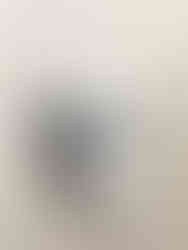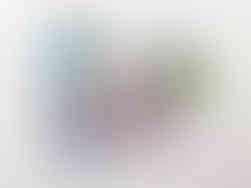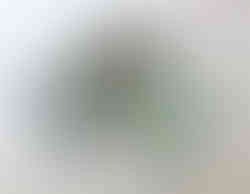You won't believe it's a faux stained glass craft.

I saw the supplies needed for faux stained glass—black lead, matte puffy paint, and a medium to make the glass look beveled. How fun!
So, I ordered the supplies. I also bought some glass paints for the colors.
Frustratingly, I got bad results from the glass paints. It barely had any color. It was like a gloss medium with one drop of colored paint. Frown.
I decided I wasn't going to chance to buy a different brand. I figured I had an arsenal of coloring options.
I tried everything from DIY gloss paint to India ink to food coloring!
Check out my test glass:

What a mish-mosh of goop on glass!
I couldn't handle testing anymore. I had one more art supply left that could do the job.
Do you want to know?
Alcohol Inks!
Who'd a thunk?
(Update: check out my tutorial for DIY Faux Stained Glass Jar Lanterns for one more awesome way to color glass)
So, here is how to do it:
Materials Used:
Picture frame from the dollar store - or any other thin piece of glass.
a template
Gallery Glass Simulated Liquid Leading
Glossy Mod Podge
Gallery Glass Window Color
You first want to find a design or template to use for your stained glass. And FYI, the leading lines always intercept other lines. You don't want a free-floating "piece of glass."
You can find a million designs online, or you can draw your own.
I made my own designs:

As you can see, one of my designs is for the buddha. Here’s a little Buddha teaching for you:

Learn more about Buddha Nature.
Two of the frames I bought seemed to fit the designs:

You must keep the size of the glass you will use in mind.
I actually made my Buddha image too big for the glass:


My second design is fine to get the edges cut off. You'll know what will work.

The next step is to clean the glass. The mediums bond better with the glass without a dust layer. Rubbing alcohol will work perfectly.

I was worried my paper template would move under the glass somehow. Trying to line the template back up with the wet leading on would be a pain.
So, I used a couple of dabs of glue stick on the corners:

Once you're sure the template is in place, it's time for some fun.
Trace the template lines with the Simulated Liquid Leading:


I made a couple of mistakes and went outside the lines. A Q-tip helped wipe up the stray lead and push it where it needed to go.

Now, let the leading dry. I gave it overnight.
Here are my pieces of glass with all the leading:


Here you can see how dull the matte leading is to make it look more like welded lead:

Ok. Are you ready for the coloring?
It's a bit of a multi-step process, but I think the outcome is worth it.
You start by filling a space with a layer or pool of water. I used an eyedropper, but you can also add water with a paintbrush.

Make sure the water fills the whole space. But don't fill it so much that you go over the leading.
Next, add a drop or two of alcohol ink to the water-filled space.
It was hot here in Northern California, and my ink and water dried fast. I had to move quickly.

The alcohol will probably separate from the water but don't mind that. It will look something like this:

On a side note: Tammy Tutterow has a tutorial for a fun background using rubbing alcohol with similar effects.
Now, you'll want to mix the water and alcohol ink together. This will ensure that the color is even throughout the space and that you don't need to worry about brush strokes.

Here is what the dried alcohol ink will look like on the glass:

The coloring of this project was all just an experiment for me. And, you might be thinking it doesn't look right. But don't worry, we're not done yet.
I knew it could use some coating. And you can't go wrong with Mod Podge. So, I grabbed the gloss variety.
I dabbed the Mod Podge on the alcohol ink. The Mod Podge will definitely pick up the alcohol ink, so try not to swish it around. Just dab a thick amount all over the colored space.

The other Gallery Glass product I got had a similar consistency to the Mod Podge, so I dabbed that onto the glass parts I didn't color.
From what I could tell, the window color medium was meant for clear glass to give it a beveled look.




I let all the white goop dry and was super happy with how it turned out.
Apparently, the beveling product and Mod Podge are similar products. Mod Podge gave almost the same effect as the other one that was made for it.
The frame that had been on each piece of glass had fallen apart when I took it off.
I decided that since the glass weighed so little, I'd put on a couple of clips, tie a chain to them, and let my faux-stained glass hang :)
So, what do ya think? Do you super want to try it now?


Now don't forget to see my other tutorial for DIY Faux Stained Glass Jar Lanterns with a different way to add color to glass.
You might also like DIY Sparkling Bottles with Lights too.
This project was...
















